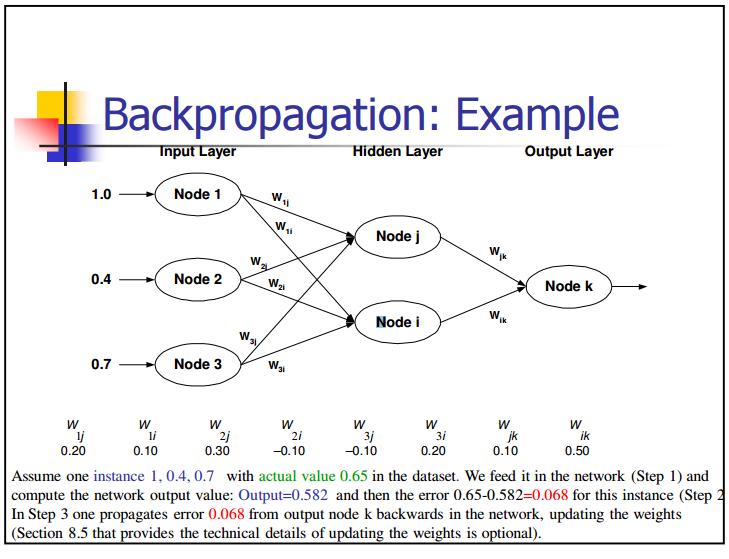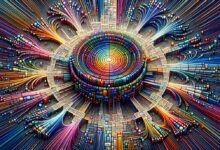Convolutional Neural Networks (CNNs) have become essential tools in computer vision, enabling advancements in image and video recognition. Understanding the core components and mechanisms of CNNs reveals their impact across various applications, from medical imaging to autonomous vehicles.
Core Components of CNNs
Convolutional Neural Networks (CNNs) consist of several key layers:
- Convolutional layers: Apply filters to the input image to detect features. These filters slide across the image, computing a dot product between the filter and the input's pixel region, resulting in feature maps.
- Pooling layers: Reduce the spatial dimensions of feature maps, making the data easier to process and less prone to overfitting. Max pooling selects the maximum value from each region, while average pooling computes the average value.
- Activation functions: Introduce nonlinearity into the network, enabling it to learn complex patterns. The Rectified Linear Unit (ReLU) is commonly used, setting negative values to zero and keeping positive values unchanged.
- Fully connected layers: Operate like a traditional neural network, connecting each neuron to every neuron in the preceding layer. They perform the final mapping to output classes, translating extracted features into predictions.
These components work together to process and interpret visual data with accuracy, making CNNs powerful tools in image and video recognition tasks.
How Convolutional Layers Work
Convolutional layers are central to CNN functionality. They use filters (kernels) to detect patterns within input images. These filters are small matrices that capture specific features like edges, texture, and shapes.
During convolution, filters slide across the input image, performing a dot product operation between the filter's weights and the pixel values. This generates a feature map emphasizing detected features. The stride determines how the filter moves across the image, affecting the spatial resolution of the feature map.
Parameter sharing is a key concept in convolutional layers. Unlike fully connected layers, filters in convolutional layers use the same set of weights while scanning different parts of the image. This reduces the number of parameters required, making the network more efficient and less prone to overfitting.
Padding addresses the edge problem where filters cannot adequately cover image edges. Adding extra pixels around the image border (typically zeros) maintains the output size. Different padding strategies include:
- Valid Padding: No padding applied
- Same Padding: Padding ensures the output feature map has the same dimension as the input
- Full Padding: Padding extends input dimensions, increasing output size
By adjusting stride and padding parameters, CNNs can be adapted for various tasks and handle images of different sizes and resolutions.
Training and Optimization in CNNs
Training CNNs involves optimizing network parameters using backpropagation and gradient descent techniques. Backpropagation computes gradients by propagating error backward through the network, while gradient descent adjusts parameters based on these gradients to minimize the loss function.
The Rectified Linear Unit (ReLU) activation function introduces nonlinearity, enabling the network to model complex patterns by mapping negative values to zero and leaving positive values unchanged.
To combat overfitting, several regularization techniques are employed:
| Technique | Description |
|---|---|
| Dropout | Randomly sets a fraction of neurons to zero during training, preventing over-reliance on particular neurons. |
| Batch Normalization | Normalizes inputs of each layer for consistent mean and variance, stabilizing training and allowing higher learning rates. |
| L2 Regularization | Adds a penalty term to the loss function, encouraging smaller weights without driving them to zero. |
| Early Stopping | Monitors performance on a validation set and stops training when performance plateaus. |
These techniques, combined with careful hyperparameter tuning, allow CNNs to learn and generalize effectively from data.

Applications of CNNs
CNNs have demonstrated exceptional performance across numerous real-world applications:
- Image Classification: CNNs categorize images with high accuracy, powering auto-tagging features in platforms like Google Photos.
- Object Detection: Used in self-driving cars to recognize and track pedestrians, vehicles, and obstacles in real-time.
- Facial Recognition: Employed in smartphone unlocking mechanisms and social media photo tagging suggestions.
- Medical Image Analysis: Assists in diagnosing conditions by analyzing X-rays, MRIs, and CT scans, detecting tumors and identifying abnormalities.1
- Retail: Facilitates automated shelf scanning and inventory management using drones equipped with CNNs.
- Agriculture: Contributes to crop monitoring and yield prediction by analyzing drone-captured images of fields.
- Aerospace: Assists in identifying structural damages in aircraft exteriors during inspections.
- Environmental Monitoring: Analyzes satellite imagery to track deforestation, monitor urbanization, and assess natural disasters.
As AI and deep learning continue to advance, the scope of CNNs is expected to broaden, driving innovation across various domains and contributing to modern society. Recent studies have shown that CNNs can achieve human-level performance in certain image classification tasks, with error rates as low as 3.5%.2
Challenges and Limitations of CNNs
Convolutional Neural Networks (CNNs) face several challenges despite their impressive capabilities:
- Computational complexity: Training a CNN involves millions of parameters and requires substantial computational power, necessitating advanced hardware like GPUs or TPUs.
- Data requirements: CNNs need vast amounts of labeled training data to avoid overfitting and achieve high performance.
- Interpretability: Often described as "black-box" models, CNNs offer limited insight into their decision-making process.
- Scarcity of labeled data: In specialized domains, obtaining large labeled datasets can be resource-intensive and time-consuming.
The need for large labeled datasets is particularly challenging in specialized domains like medical imaging, where labels often require expert knowledge and extensive manual effort. Techniques like transfer learning and semi-supervised learning are employed to address this, but they introduce their own set of challenges.
"While CNNs have transformed numerous industries with their ability to analyze visual data, they come with inherent challenges that necessitate careful consideration and innovative solutions."
Addressing these limitations involves balancing computational demands, managing extensive data requirements, tackling overfitting, enhancing interpretability, and handling the complexities of large labeled datasets.
Case Study: Enhancing Nasal Endoscopy with CNNs
Researchers from Ochsner Health have developed a CNN model to improve the precision and efficiency of nasal endoscopy diagnostics. This case study examines the methodology, results, and implications of leveraging CNNs in this medical domain.
Methodology:
- Model: YOLOv8 object detection model
- Task: Identify and segment critical anatomical landmarks (inferior turbinate and middle turbinate)
- Dataset: 2,111 nasal endoscopy images from 2014-2023
- Training: Transfer learning, hyperparameter fine-tuning, backpropagation, and stochastic gradient descent
Results:
| Metric | Value |
|---|---|
| Average Accuracy | 91.5% |
| Average Precision | 92.5% |
| Average Recall | 93.8% |
| Average F1-score | 93.1% |
These results were achieved at a 60% confidence threshold.
Implications:
For clinicians and otolaryngologists, the deployment of CNNs in nasal endoscopy can enhance diagnostic accuracy, reduce interpretation errors, and streamline the diagnostic process. For trainees and non-specialists, CNNs can assist in overcoming the steep learning curve associated with understanding the complex anatomy of the nasal cavity.
The success of this case study suggests broader implications for the use of CNNs in other areas of medical imaging. As the models are refined and adapted for various imaging modalities, their potential to enhance diagnostic precision, streamline workflows, and compensate for the scarcity of specialized medical expertise becomes more apparent.
As research continues to advance, CNNs will likely play an increasingly important role in enhancing diagnostic precision and streamlining workflows across numerous fields. The integration of CNNs in medical imaging represents a significant step towards more accurate, efficient, and accessible healthcare diagnostics.
Writio: Your virtual content writer creating high-quality articles for blogs and websites. This article was written by Writio.







